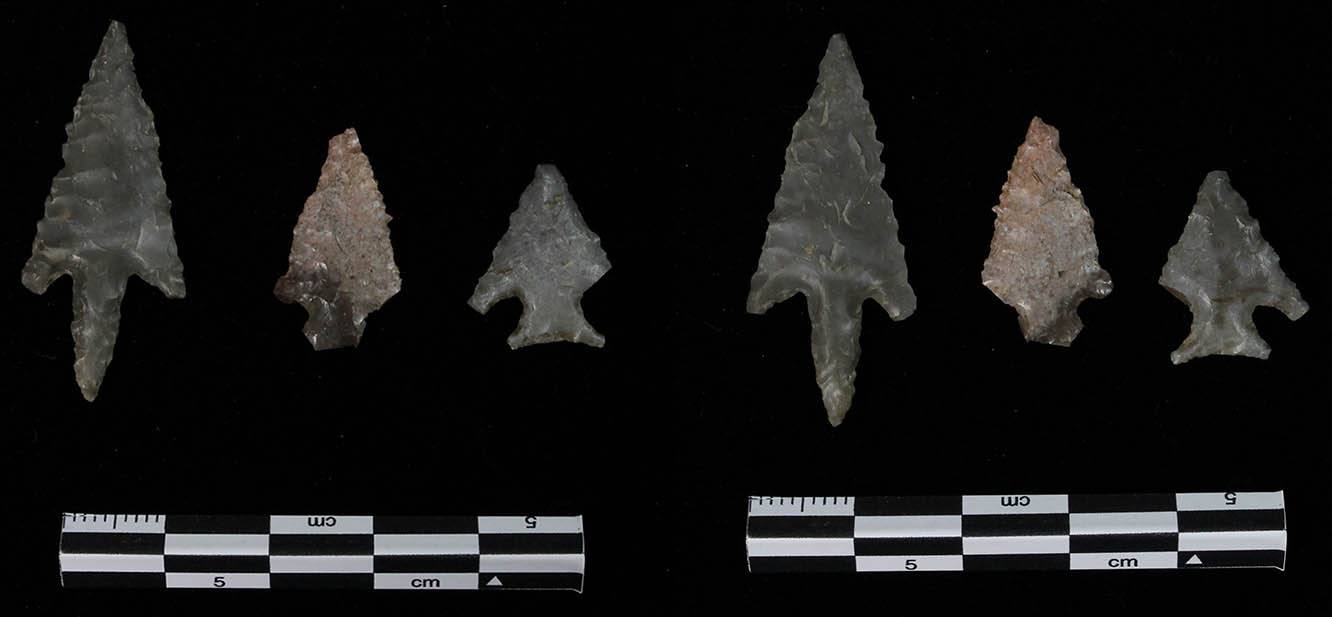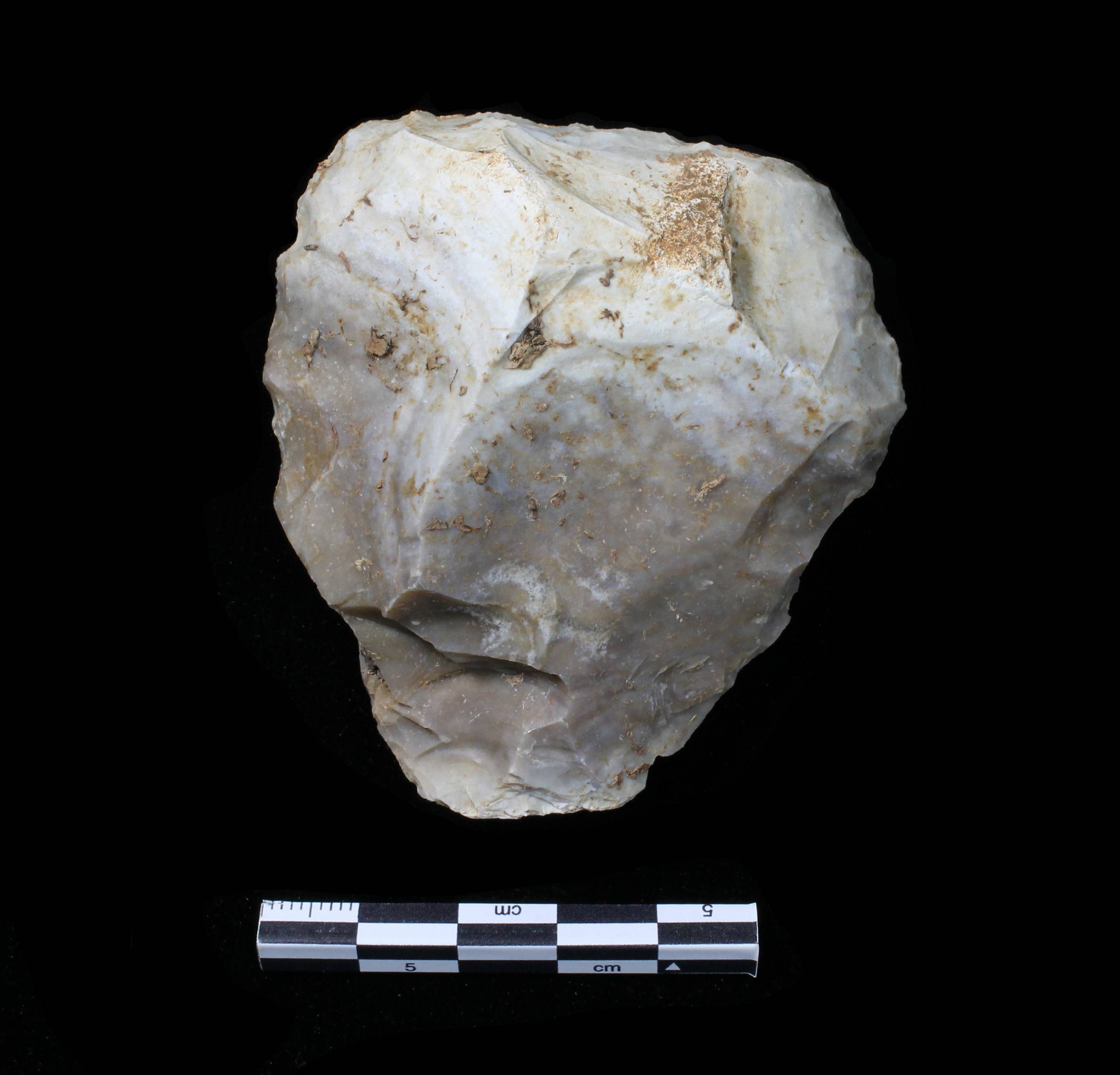Stone Artifacts
Archaeologists recovered 131,553 artifacts made of stone from the 2014 excavations at the Spring Lake Site. Stone artifacts were made and used to serve a variety of needs. Some tools were saved – or curated – to be used many times, while others were expedient tools, which were used only a few times before being discarded. The stone tool kit at Spring Lake consists of both reliable, maintainable tools, like projectile points and bifaces, and more expedient tools made from chert flakes. The stone artifact assemblage at Spring Lake is undergoing analyses that can help us better understand the techniques used to make them, temporal patterns reflected in the assemblages, and how those patterns were shaped by changes in population and subsistence.
For example, it is believed that the stone tool assemblage for any particular time period can provide a foundation for differentiating between foraging and collecting strategies. In general, if an assemblage of tools consists mostly of expedient tools, then it could be said that the people associated with that assemblage lived in a resource-rich environment. Researchers believe that expedient tool kits are associated with “forager” societies that are somewhat mobile, and extract food from a variety of resources. On the other hand, if an assemblage is made up of mostly curated and highly specialized tools, then the society occupied sites for longer periods, made relatively fewer residential moves, and commonly sent out logistical task groups to obtain a small number of predictable resources. This type of economic behavior is thought to be typical of “collector” societies and would require reliable and maintainable tools.





